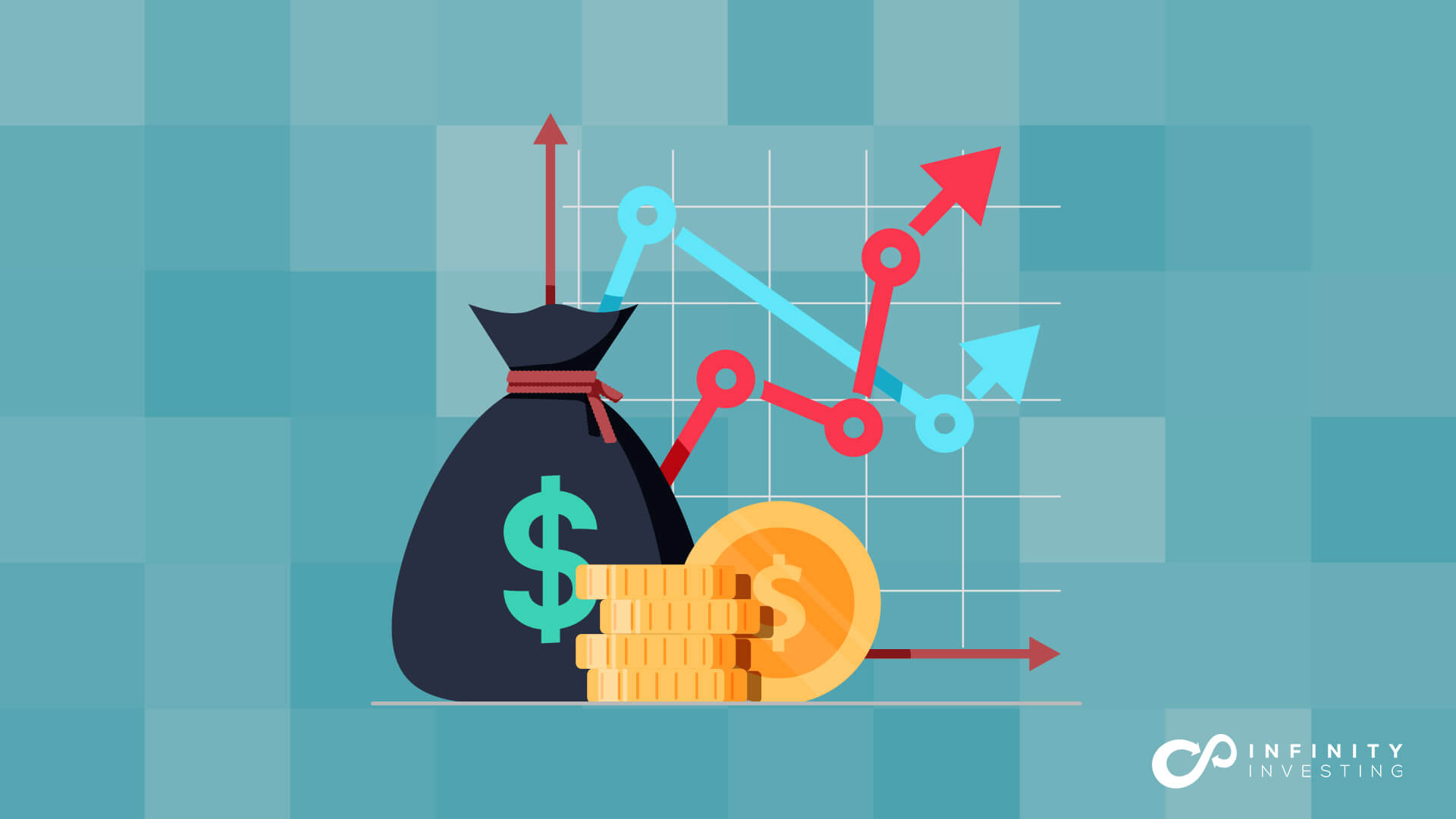
Planning for retirement is harder than ever with declining Social Security funds and many companies moving away from pensions. If you’re worried about how you’ll cover expenses once you reach retirement age, you’re not alone. Planning for retirement today requires a diverse investment portfolio that manages and mitigates risk. Stock dividend investing is an excellent investment for your retirement planning strategy. Dividend-paying stocks carry minimal risk, provide you with guaranteed flexible income, and help you hedge against inflation.
Key Takeaways
- Stock dividend investing is a strategy that involves reinvesting your dividend payments back into the asset to benefit from the compounding interest.
- A stock dividend investment strategy helps you grow your retirement savings by producing two sources of income — capital gains and dividend payments.
- Stock dividend investing offers many benefits, including flexible passive income, tax benefits, and risk diversification.
- Strategies like compounding interest and a dividend reinvestment plan can help you automatically fund your retirement.
- Certain investors may prefer investing in a stock dividend fund to choosing specific stocks.
Infinity Investing Featured Event
In this FREE event you’ll discover how the top 1% use little-known “compounders” to grow & protect their reserves. Our Infinity team of experts show you how to be the best possible steward of your finances and how to make your money and investments work for you instead of you working for them. Regardless of your financial situation today, you’ll have a road map to get to where you want to be.
What Is Stock Dividend Investing?
Stock dividend investing is an investment strategy that involves investing in dividend stocks, which are publicly traded companies that share profits with their investors. Not all companies pay dividends, and the ones that do usually pay on a quarterly schedule.
When you receive your dividend payments, you may choose to save the cash, spend the money, purchase additional stocks, or reinvest them back into the original company. Stock dividend investing is a strategy that involves reinvesting your payments. These reinvested funds add to your premium, earning additional capital gains and dividends. Continuing to reinvest over your lifetime can lead to significant returns through compounding interest.
Stock dividends also increase in value with time, so adding them to your portfolio can be a great way to earn passive income once you retire.
How Does Stock Dividend Investing Grow Your Retirement Savings?
One of the greatest advantages of stock dividend investing is that you can receive dividend payments regardless of the stock’s performance. This can lead to predictable payments every quarter. If you continue to reinvest your dividends back into the company rather than cash them out, your dividend payment amount also increases. You can continue reinvesting until you reach retirement age and start collecting the dividend payments as income. Depending on when you began reinvesting your dividends, your payments could be significant.
Benefits of Stock Dividend Investing
Stock dividend investing offers two sources of income: capital appreciation and dividend payments. This makes dividend stocks a popular choice for low-risk investors. Dividend stocks offer many benefits, including:
- Passive income: Dividend stocks can be a great way to earn passive income, especially after retirement. The value of your stock can increase faster than other investment types since you still receive capital returns in addition to dividends.
- Flexible payments: Dividend stocks offer flexible payments since you can choose whether to withdraw your funds or reinvest them into the market. This makes stock dividend investing a great strategy for achieving financial freedom despite its low risk.
- Opportunity to hedge against inflation: Inflation is a normal part of the U.S. economy. Dividend stocks help supplement your income to accommodate the increasing cost of goods from inflation. Historically, stock dividends have also outpaced inflation.
- Tax advantages: Dividend payments may be categorized as either income or capital gains, which gives you more control over your tax liabilities.
- Ability to diversify your risk: Stock dividends are typically less risky than other investments, making them a great strategy for diversifying your risk. You can even diversify your risk among stock dividends through mutual funds or exchange-traded funds (ETFs).
- Reputable stocks: Many dividend-paying stocks are companies with good reputations and performance reports. Investing in reputable stocks usually means you’ll also receive steady returns on your initial investment.

How To Grow Your Retirement Savings With Stock Dividend Investing
Stock dividend investing is one of the best ways to grow your retirement savings. You can supplement your income in retirement with the following stock dividend investment strategies:
Compounding Interest
Compounding interest refers to the process of earning interest on interest. The idea of compounding interest is why funding your retirement as early as possible is the best strategy. Reinvesting your dividends as a part of your investment strategy in your 20s or 30s leads to larger returns than waiting until your 50s or 60s. Dividend payments typically increase over time and, when planned accordingly, could replace your monthly income.
Mitigate Risk
Successful investing requires risk management. This includes filling your investment portfolio with a range of low, moderate, and high-risk investments. For example, stocks can be riskier than other investments but also have the potential for higher payouts. Annuities and CDs are lower risk but don’t offer very high returns. Dividend-paying stocks generally carry moderate risk. While a dividend-paying stock may be riskier than a CD, it’s usually less risky than an individual stock that doesn’t pay dividends. This is because the companies that pay dividends are usually established businesses with good financial reports.
Diversification and risk mitigation are possible even within stock dividend investing through funds. Of course, where you’re at in retirement planning dictates your level of risk tolerance. Even those near or already in retirement can benefit from stock dividend investing by choosing reputable investments with a strong history of paying dividends. While you can no longer benefit from compounding interest, you can still collect monthly dividend payments.
Diversify Income
Diversifying your income among multiple investments is the best way to ensure you have enough funds for retirement. A good mix of stock dividend investments, mutual funds, and ETFs can add monthly income to your Social Security and pension payments. Additionally, since dividends aren’t guaranteed, spreading your investments across types ensures you receive payments.
A dividend ETF allows you to invest in a collection of dividend-paying stocks. This strategy offers more risk management because your payouts aren’t dependent on the performance of a single company or stock. Your age determines the best ratio of investments. Younger investors may have a higher rate of stocks, whereas investors nearing retirement may choose safer options, like dividend-paying stocks.
Dividend Reinvestment Plan (DRIP)
You may reinvest your dividends, giving you control over when and how much you reinvest. Some investors may prefer an automated approach in the form of a dividend reinvestment plan. A DRIP may provide additional benefits, including no fees or commissions.
An automated approach also ensures your funds are quickly reinvested into the company, where they can continue increasing. A DRIP investment plan also offers a set-it-and-forget-it approach which can lead to better financial habits as you don’t have to make the conscious decision to reinvest the funds each quarter.
4% Rule
The purpose of the 4% rule is to determine how much a retiree can withdraw from their retirement accounts each year once they reach retirement age to ensure it lasts their lifetime. The principal claims you can use 4% of your funds in the first year of retirement. Each year after, you adjust this amount to account for inflation. The 4% rule is based on a 30-year retirement period.
While modern investing practices, such as stock dividend investing, have tweaked the 4% rule, the general purpose of it still guides retirement planning for many. Some believe that choosing the right stocks and taking advantage of compounding interest may allow you to increase that percentage or better prepare for times of higher inflation.

Dividend Stocks vs. Dividend Funds
Adding dividend-paying investments to your portfolio can be a good financial decision. However, many investors question whether to invest in dividend stocks or funds. The primary difference between dividend stocks and funds is the level of control over each investment. Because investing in a dividend fund places your money with a large collection of companies, you have less control over individual stocks.
When you invest in dividend stocks, you can choose specific companies. Investing in individual stocks may require a more hands-on, research-heavy approach. You can expect slightly more volatility when investing in individual dividend stocks, especially if the company records losses and stops paying dividends. However, with higher risk comes the potential for higher returns. Choosing between dividend stocks and funds is about risk versus reward and your risk tolerance level.
With proper planning, stock dividend investing can become a primary source of income during retirement. Stock dividend investing allows you to double dip on your investments through returns and dividend payouts. Reinvesting your dividend payments sets you up to earn compounding interest, increasing how much is available to you during retirement.
Learn More About Investing Strategies for Retirement
Do you want to learn more about how to prepare for a financially stable future? Sign up for a 360 Pro Membership with Infinity Investing to access tips and tricks to help you earn a passive income, prepare for retirement, and build a financially stable future.
Infinity Investing Featured Event
In this FREE event you’ll discover how the top 1% use little-known “compounders” to grow & protect their reserves. Our Infinity team of experts show you how to be the best possible steward of your finances and how to make your money and investments work for you instead of you working for them. Regardless of your financial situation today, you’ll have a road map to get to where you want to be.

